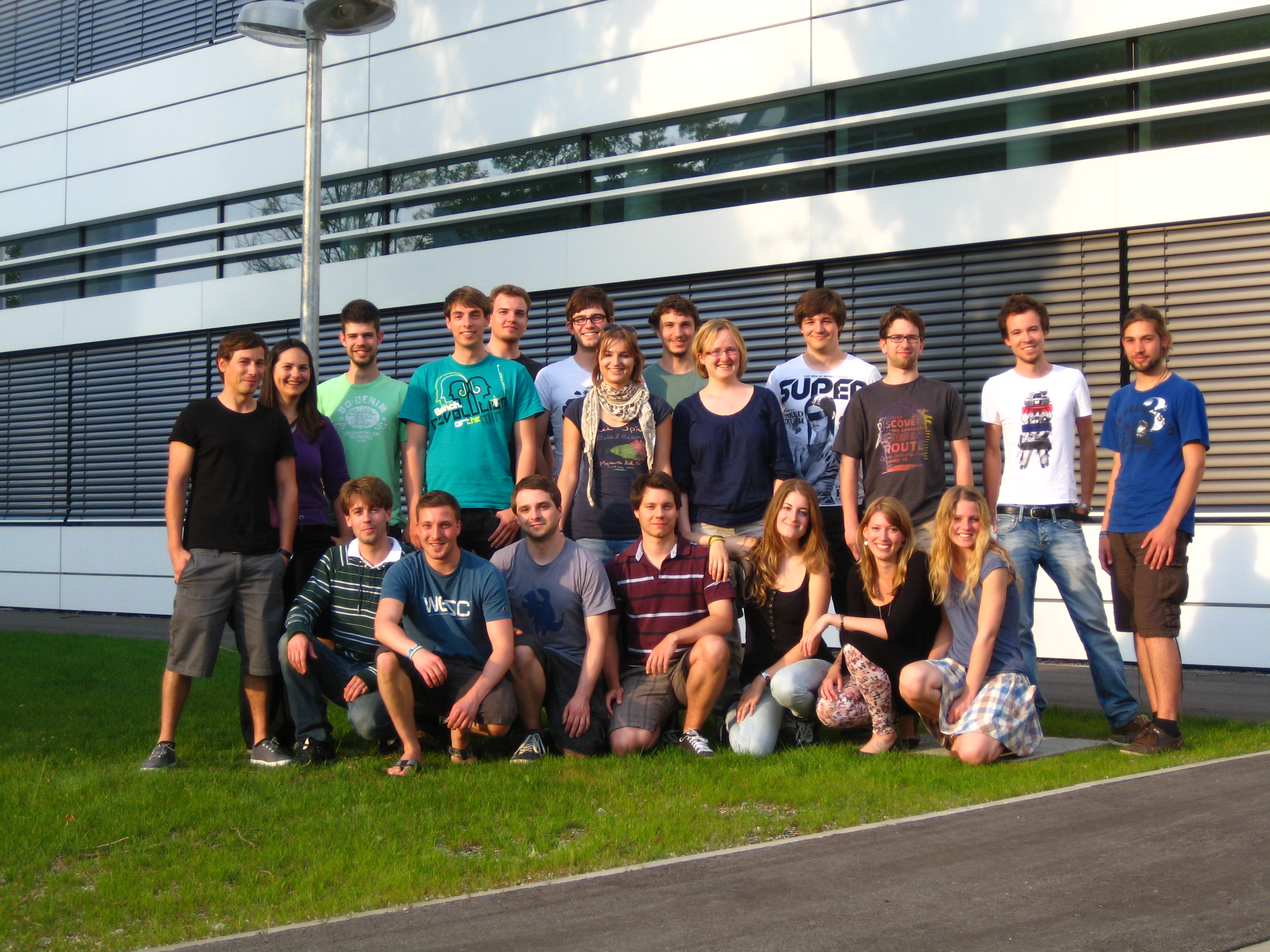Team:TU Munich
From 2011.igem.org
|
| |
|
This year, we aim to develop a light-controlled 3D-printer by innovative utilization of optogenetics. As a first step, we want to develop a genetic logical AND-gate sensitive to light of two different wavelengths (e.g. blue and red light). The bacteria are then immobilized in a transparent gel matrix, where they can be precisely actuated when hit by both blue and red light at the same time. If both of these inputs are positive, gene expression is induced. Various different gene products can be expressed using this system. For example, a simple colored pigment will allow us to create colored three dimensional objects, while expressing collagen and consecutive biomineralization and generation of hydroxylapatite could be used to create bone. Optogenetical AND-Gate In order to be able to adress our immobilized cells in a defined spatiotemporal manner, we require two signals which will be irradiated into the gel block from two different directions. For this purpose, we will introduce an optogenetical AND-Gate into the bacteria. This logical gate is based on amber stop-codon suppression via the non-canonical tRNA supD. A light sensitive promoter induces the expression of a mRNA coding for a T7-polymerase, which can only be translated by ribosomes if the correct amber tRNA is present. The tRNA is expressed by a second light-sensitive promoter. Thus, only cells which receive both signals produce the desired substances. Light Sensory Domains We have three candidates which can be used as light sensitive promoters: the promoter of YcgF/E as blue light sensor, Cph8 as red light sensor, and ccaR/ccaS as green-light sensor. At this point, we are inclined to use a combination of the red and blue light sensor systems, because of the great difference between the absorbtion maxima of the light sensory domains. We expect that this assembly will be the one with the lowest amount of unspecific gene expression which could occur due to overlapping of the absorption spectrums of the sensory domains. Progress Construct design has been completed while cloning is still in progress. Further more, we found a suitable solid matrix which is, on the one hand, clear enough to be penetrated by light beams without refracting them and, on the other hand, solidifies at a temperature that is low enough to allow for cell immobilization without harming the bacteria. | |
 "
"





















